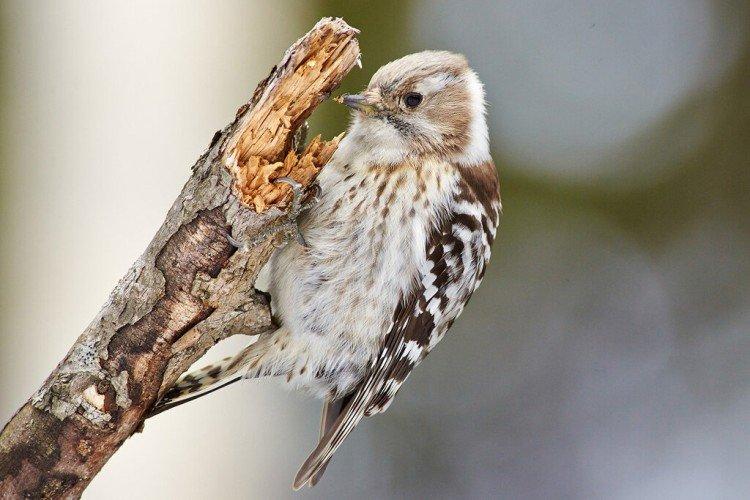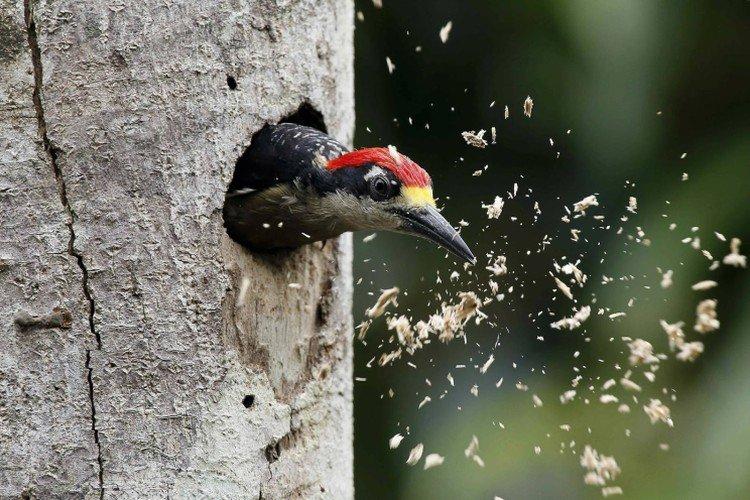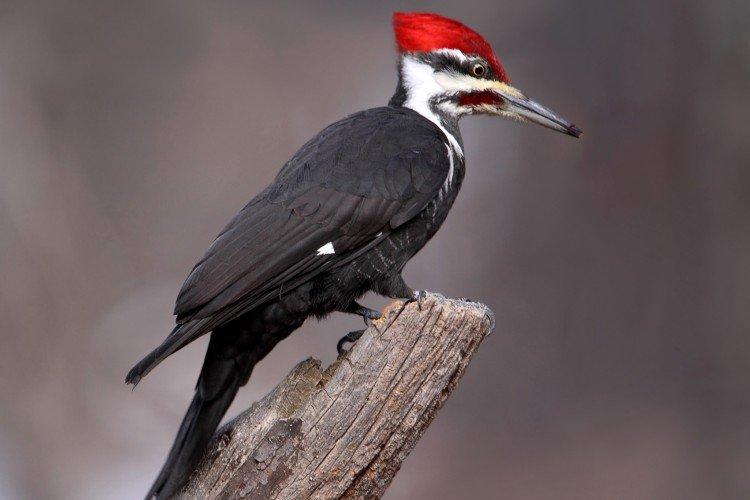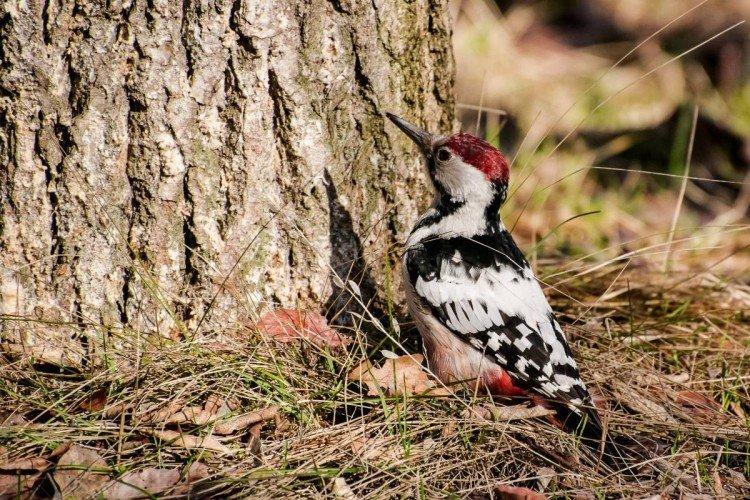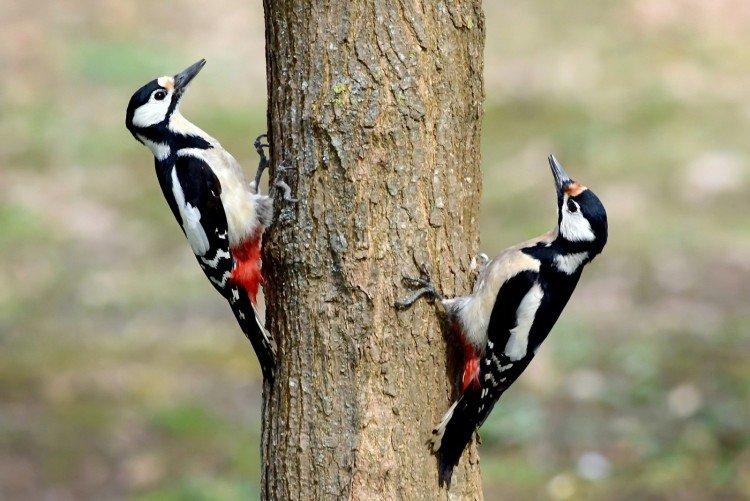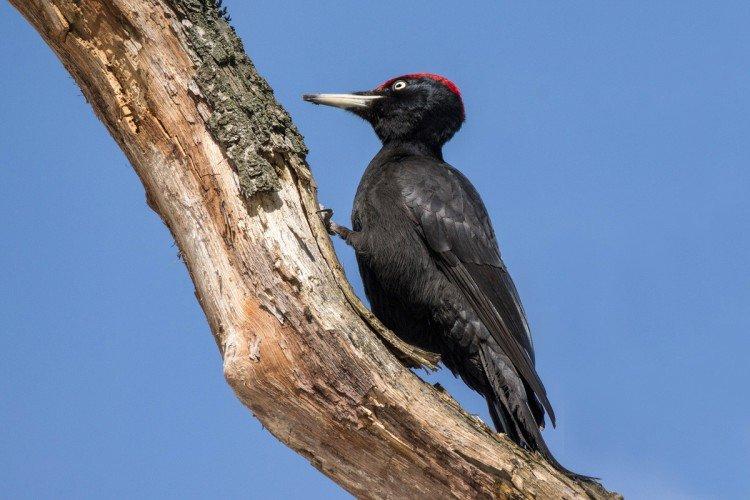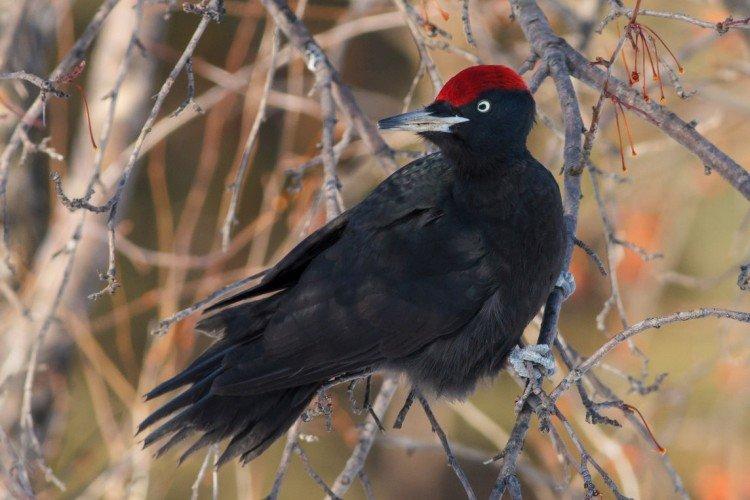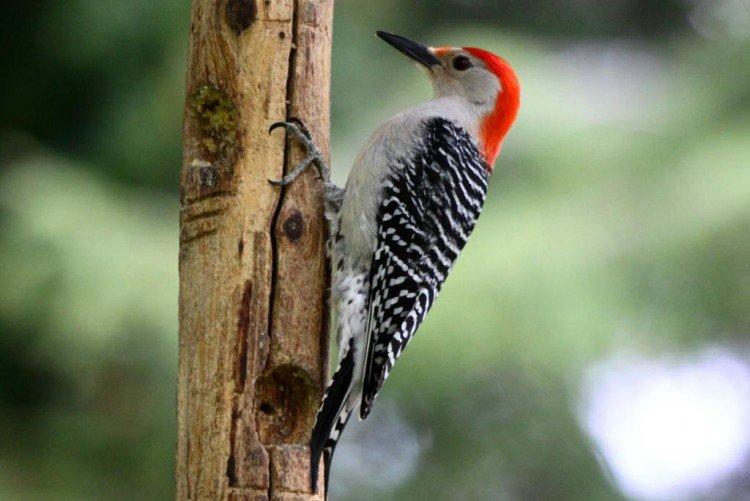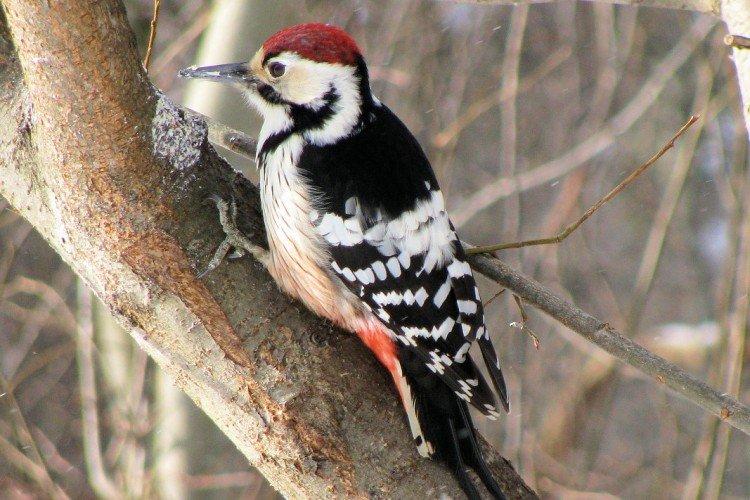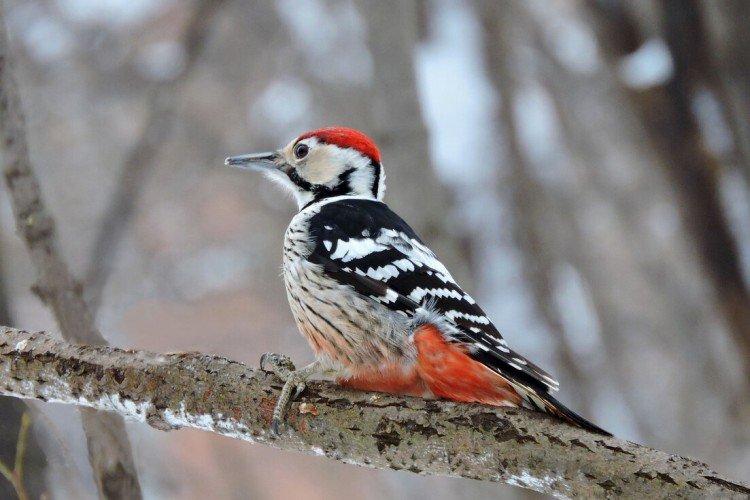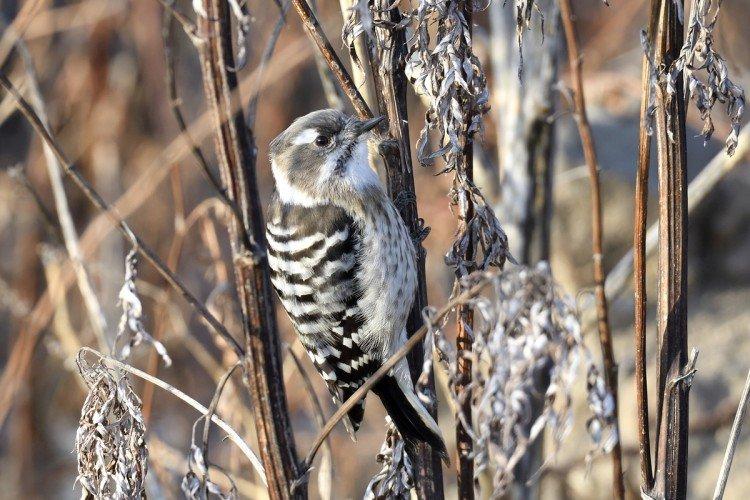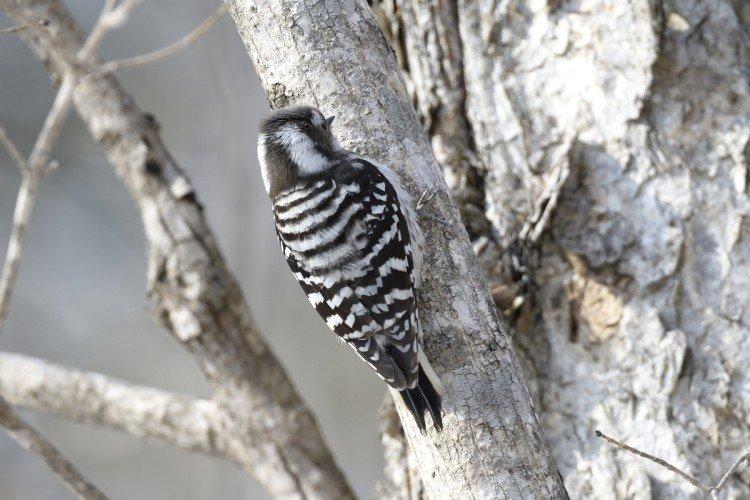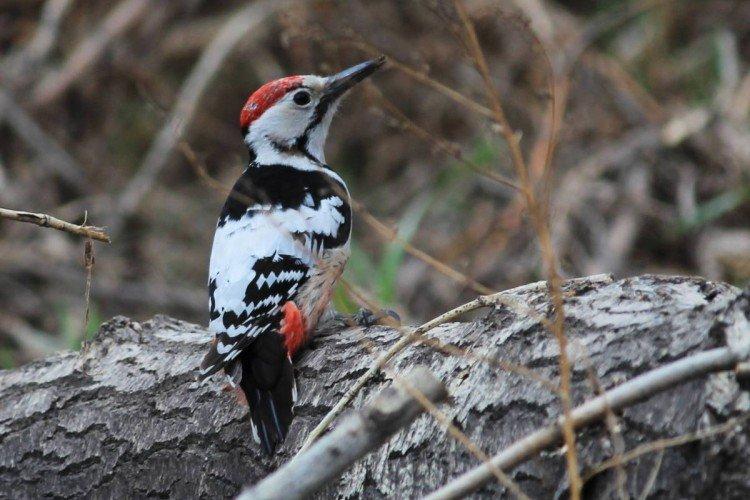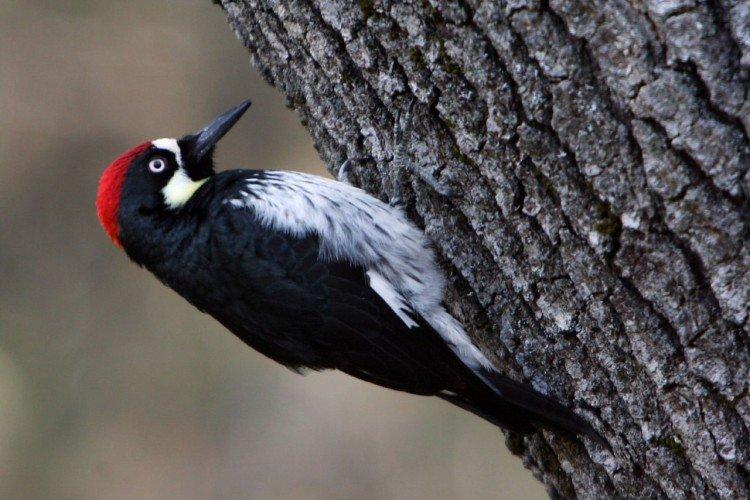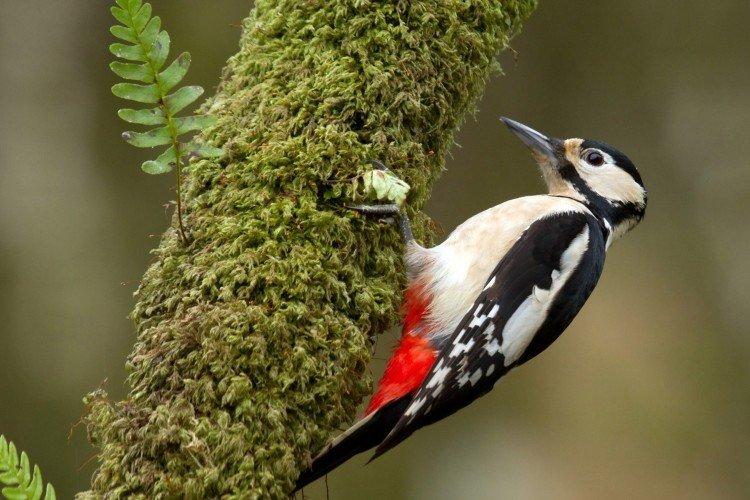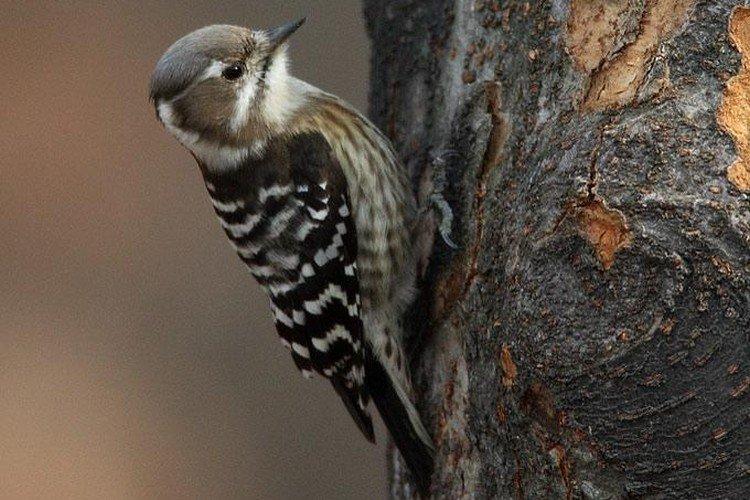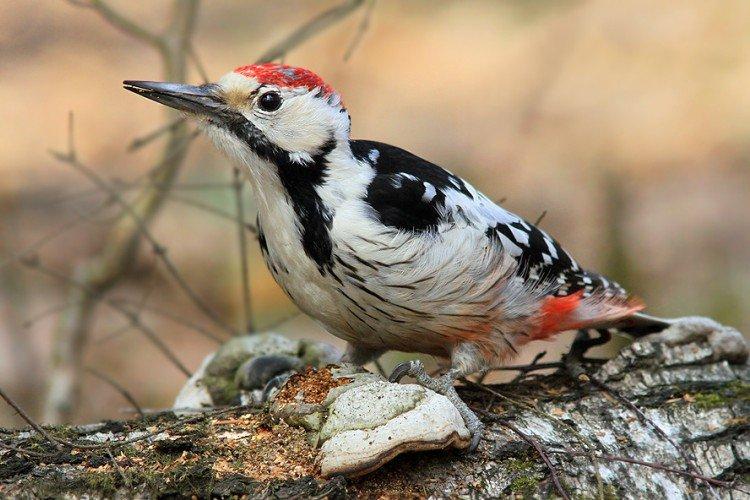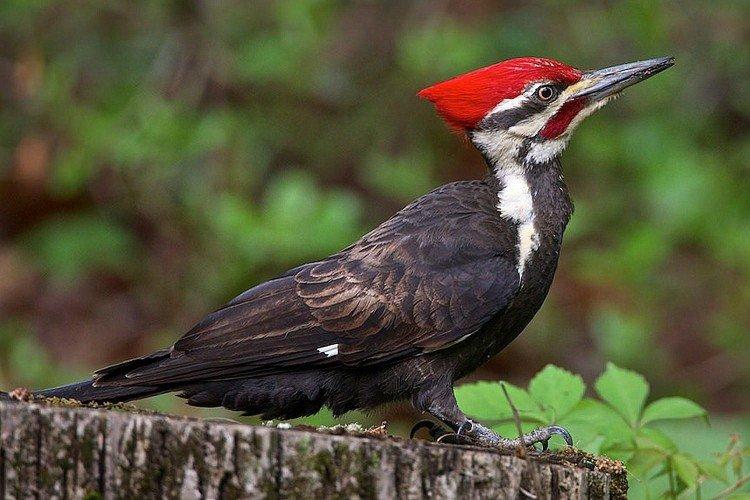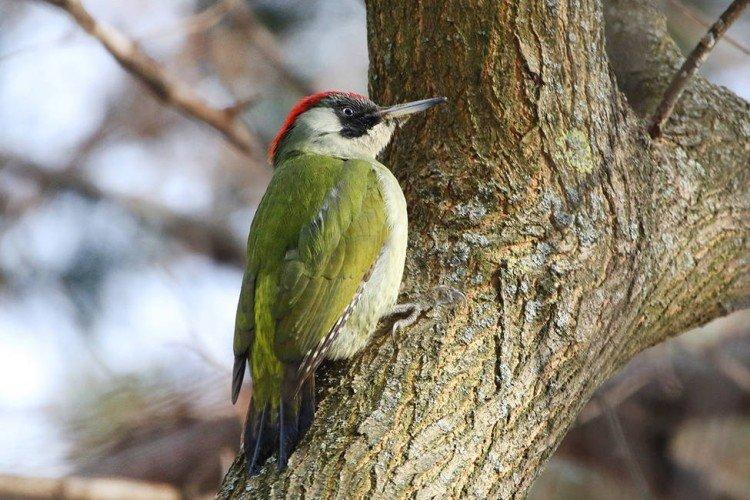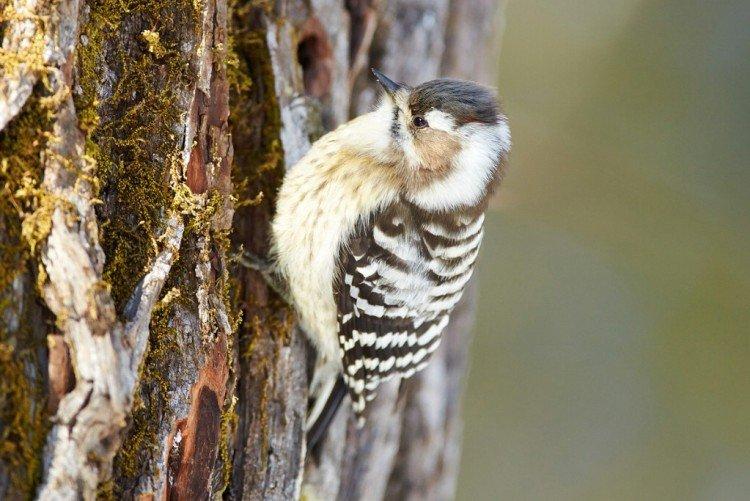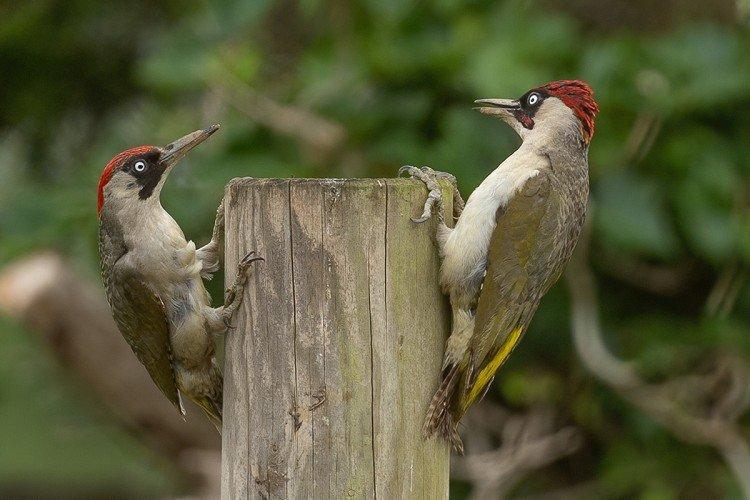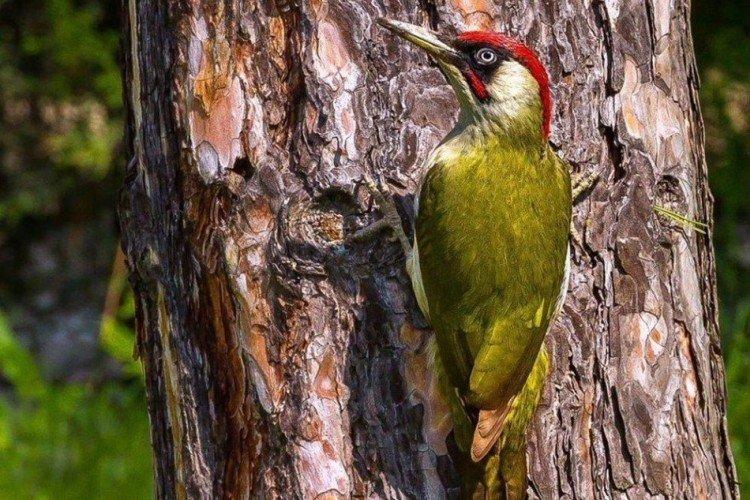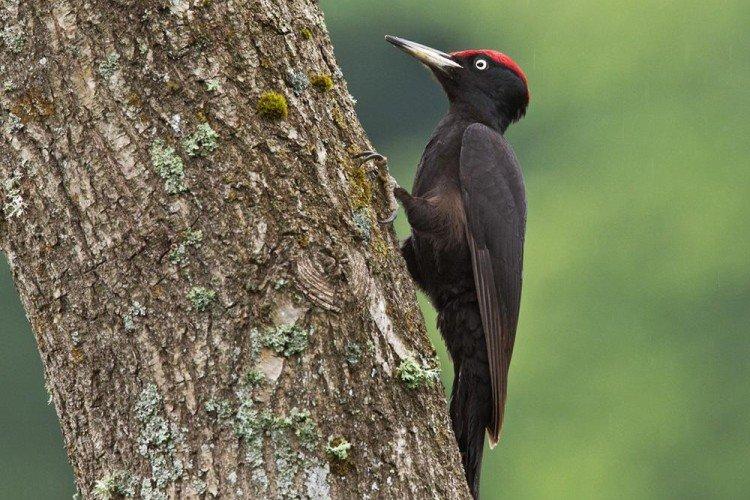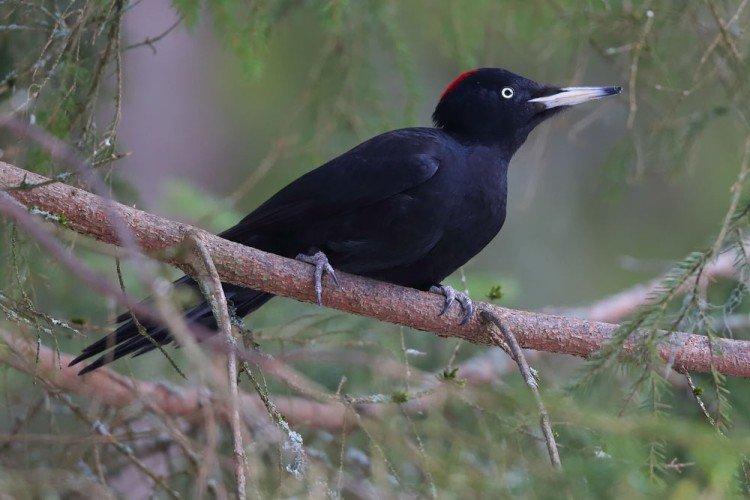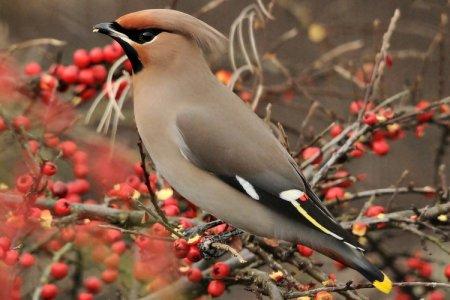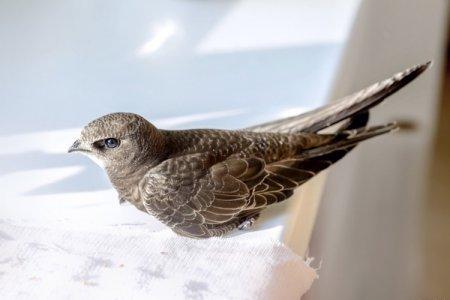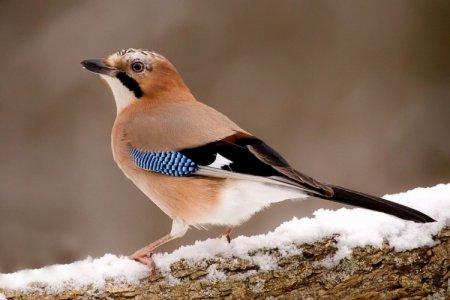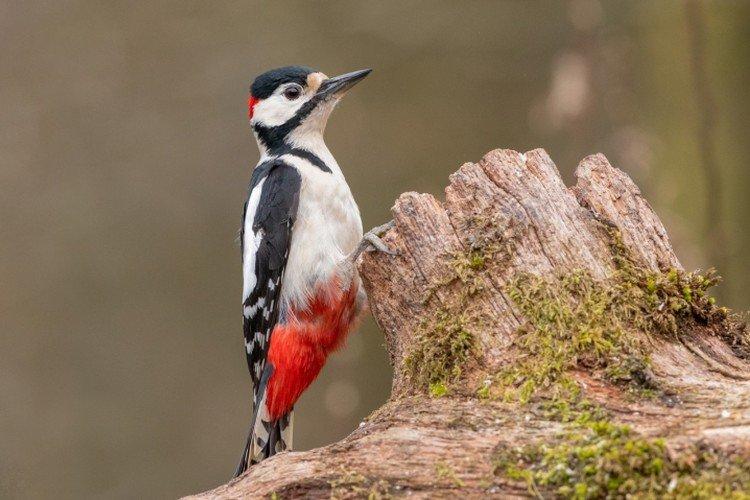
We know from childhood that the woodpecker is the most valuable orderly of the forest. Even in fairy tales, they appear as positive characters. And this has a real background: all thanks to how many pests and parasites a woodpecker destroys in a lifetime. But that's not all there is to know about this bird!
general description
Woodpeckers are a large and diverse group of birds from the family of the same name. Their closest relatives are exotic toucans and less exotic beards.
Woodpecker appearance
Woodpeckers are medium-sized birds, but there are also very small specimens. The length of the body is about 25 cm, but species of both 8 and 50 cm are known. The body is elongated, the head smoothly continues the line of the back, and sharp wings allow you to maneuver among the branches.
The woodpecker has a long, straight beak, slightly pointed towards the end, due to which it easily breaks the bark and hunts for beetles. The stiff wedge-shaped tail helps to masterly balance and serves as a support. The plumage is almost always variegated black and white, with red or yellow markings.
Due to the fact that woodpeckers constantly knock on wood, they have a special skull structure. Due to the porous structure, birds do not experience concussion. In addition, the woodpecker's nostrils are protected by hard bristles from sawdust and shavings. The toes are directed back and forth in pairs to better grip vertical surfaces.
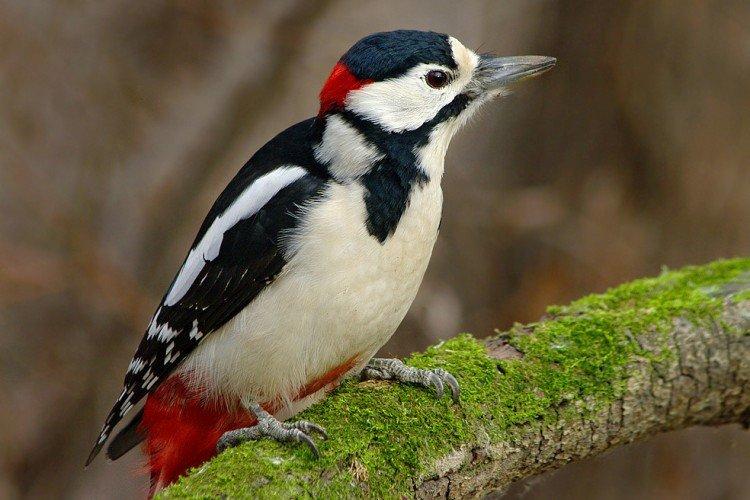
Male and female woodpecker: differences
In some species, the main difference lies precisely in the presence of a red spot on the head, which females do not have. As for the rest, sexual dimorphism in woodpeckers is almost not expressed.
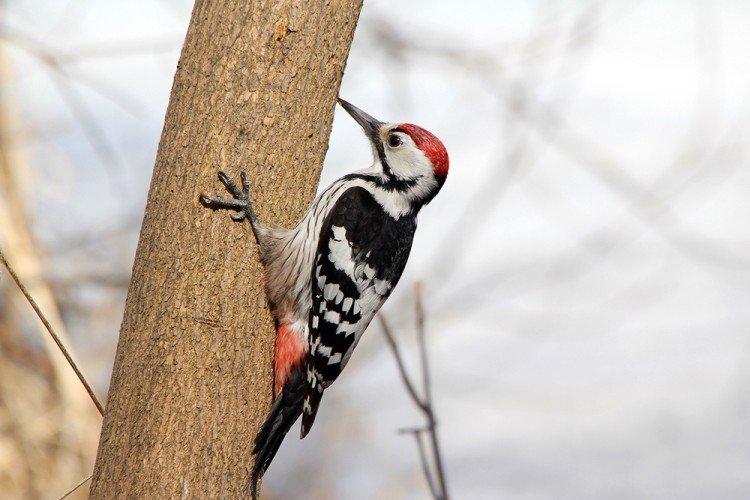
Communication
Woodpeckers are not a songbird, but they have their own interesting communication feature. They tap special sound combinations on the trees, thereby denoting the territory, attracting partners and scaring off rivals. This beat can be heard for several kilometers. Sometimes, sly birds even use pieces of metal and cans to knock.
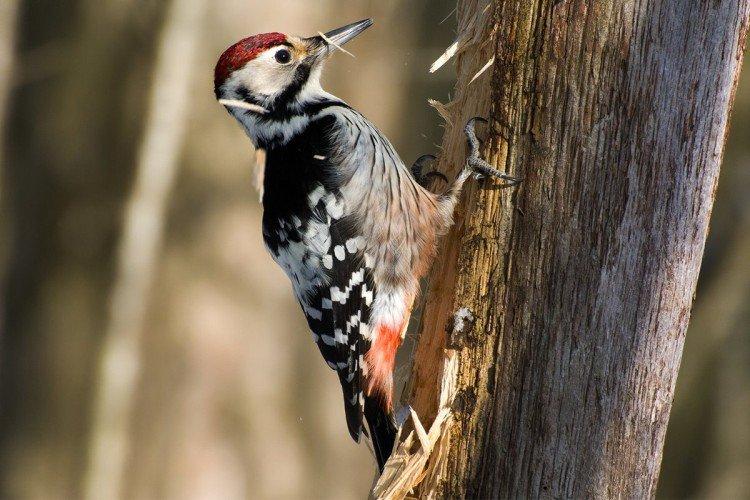
How many woodpeckers live
The life expectancy of woodpeckers is on average about 11 years, but very much depends on the specific species and living conditions. There are real centenarians who live for 30 years.
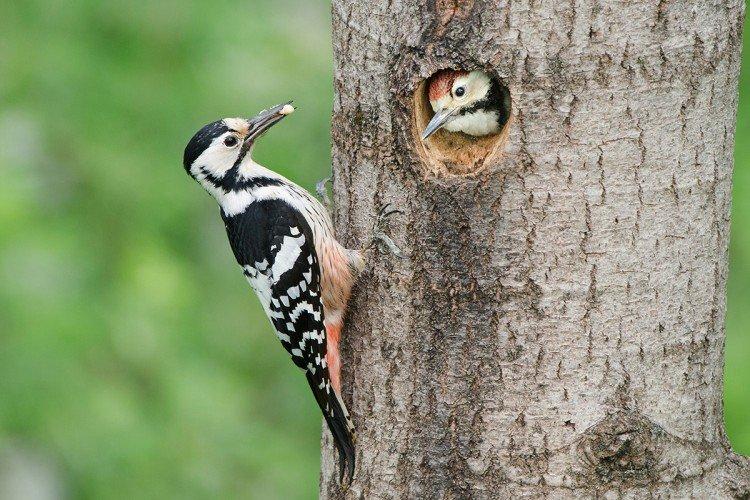
Species of woodpeckers
There are several hundred species of woodpeckers in the world. Of course, it is simply impossible to sort them all out so quickly. Therefore, for now, let's focus on the most common ones!
Common woodpecker
It is the one that we can most often admire in mid-latitudes. Against the background of the black and white color, red spots on the head and under the tail stand out clearly.
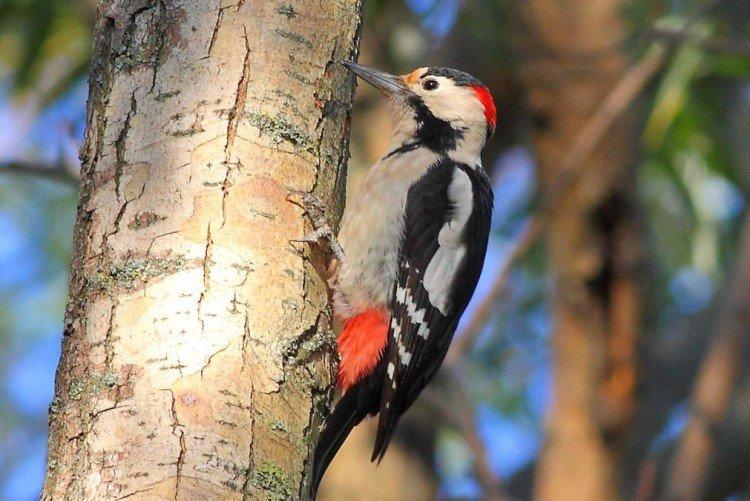
White-backed woodpecker
A relatively large species weighing up to 300 g with a long neck and seemingly angular proportions. It has solid white spots on its back and chest.
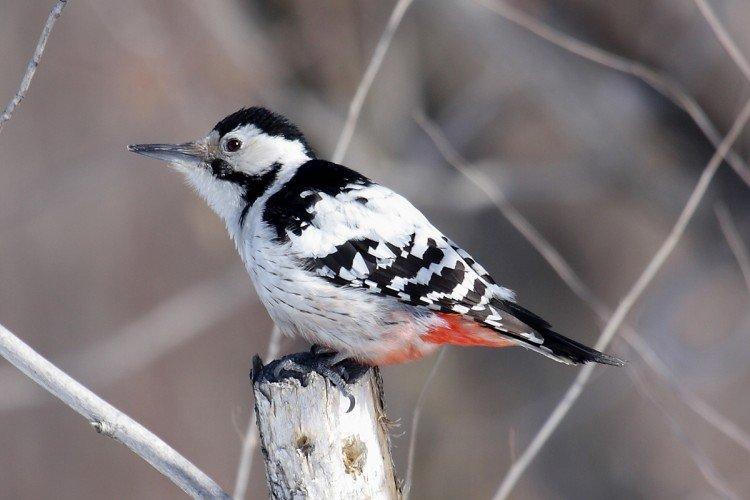
Great pointed woodpecker
Oddly enough, in fact, this is a very small woodpecker, only up to 16 cm in length. Most often, this owner of a stylish variegated plumage is found in Asian regions.
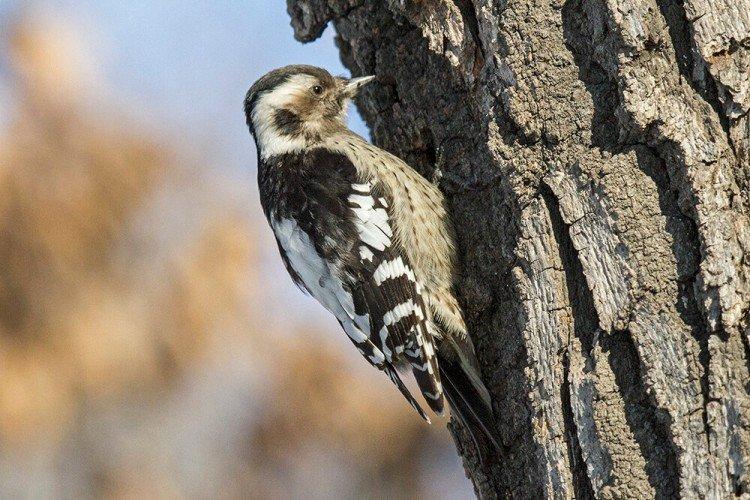
Black woodpecker
A very large and very unusual member of his family. He has a dull black color with a red "cap", light eyes and a light beak. Weight reaches 450-500 g.
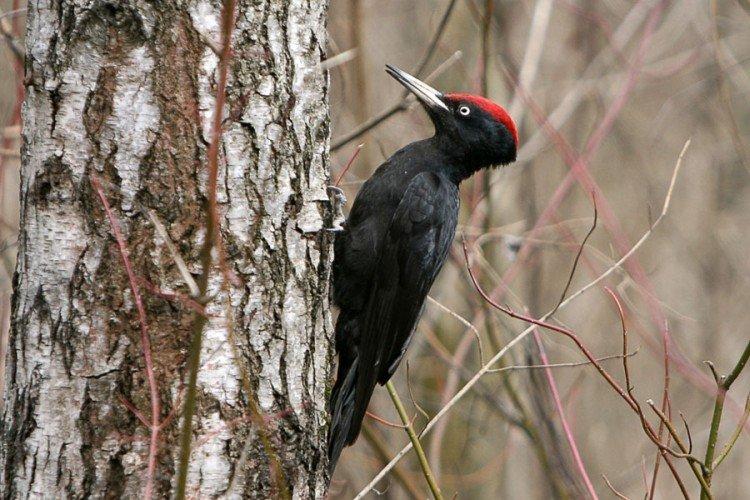
Syrian woodpecker
Outwardly, it almost does not differ from the ordinary one, but it has a longer beak, and it is generally more variegated. He is a resident of the Balkans and all regions of the Middle East.
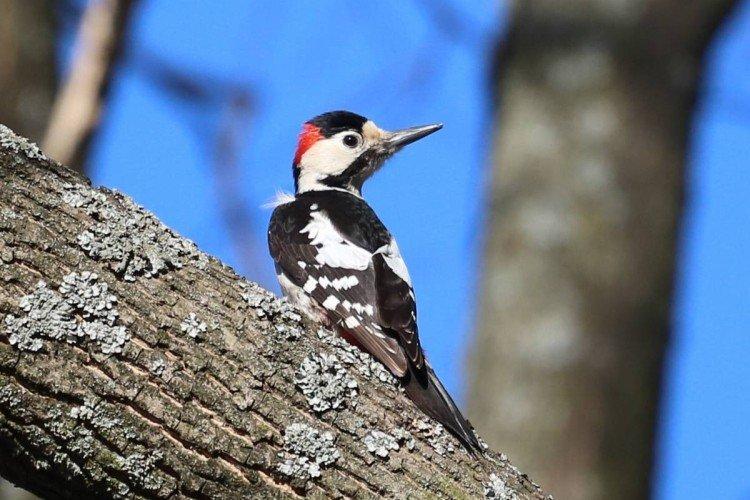
Red bellied woodpecker
Not all woodpeckers are necessarily black and white. For example, this red-haired baby weighing only 70 g boasts a bright rusty-orange belly.
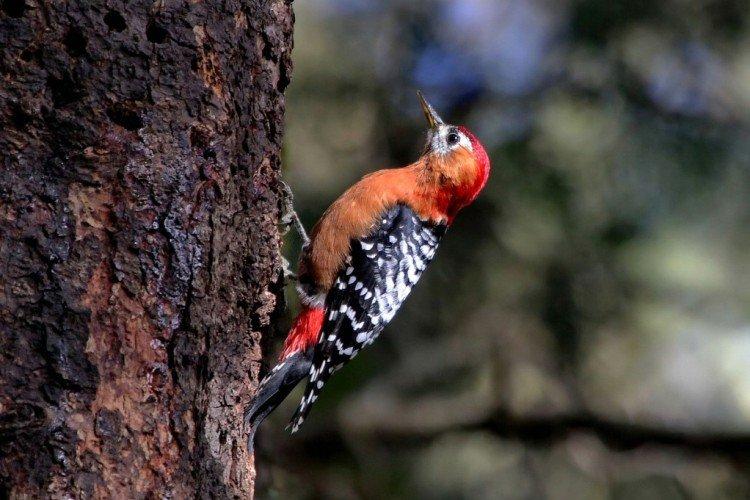
African beard
This woodpecker is definitely not found in Russia, but it is very interesting for its multi-colored speckled plumage. In addition to red, there are blue, yellow and greenish feathers.
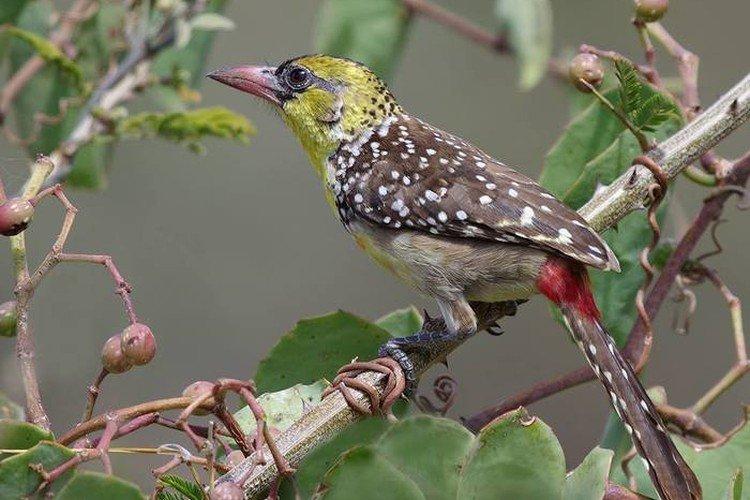
Lifestyle
Woodpeckers prefer a sedentary lifestyle and always hide between branches. And all because, due to their body structure, they are very unstable on planes.Even these birds sleep in an upright position.
Woodpecker habitats
Due to the huge species diversity, woodpeckers are found everywhere from Siberia to Africa. There are none, except perhaps in Scandinavia and the Arctic. They prefer to live on the upper levels of forests, but are not afraid of being close to humans, willingly settle near houses and feed on waste.
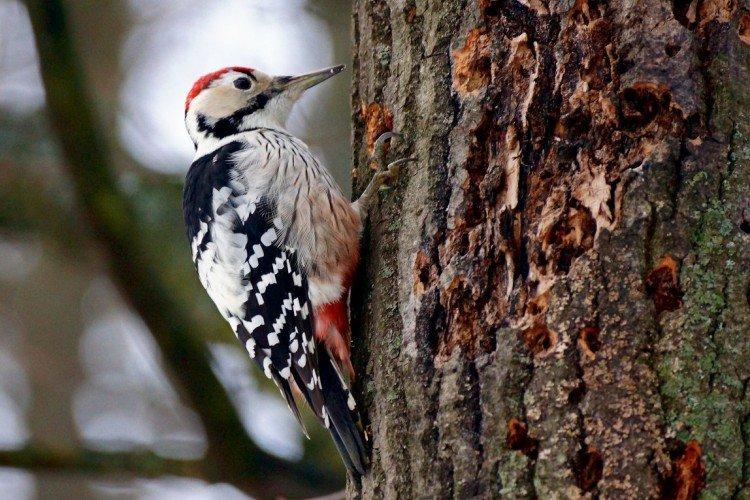
The diet
The vast majority of woodpeckers feed on parasites and insects that live on tree bark. They destroy bark beetles, aphids, termites and ants, and that is why they were called the orderlies of the forest. By the way, woodpeckers find trees with pests by ear. And in winter, birds switch to plant foods - cones, nuts, seeds.
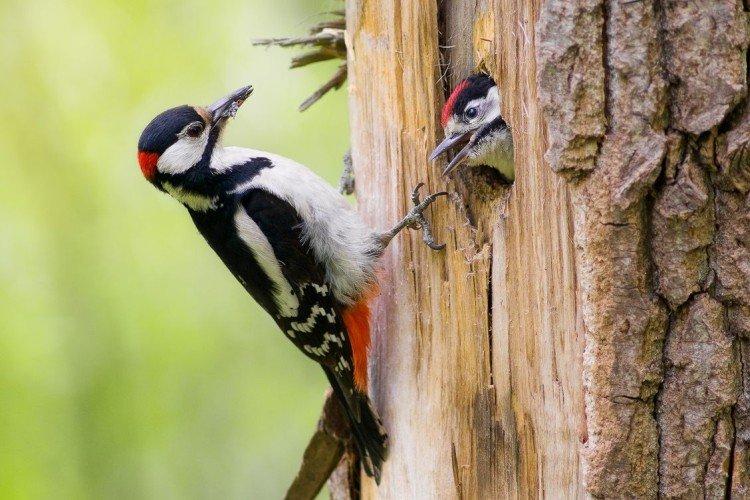
Wintering
Almost all woodpeckers are sedentary birds, not prone to migration. They can migrate only as the food supply is depleted. From frost, they hide in pre-prepared hollows. And only individual representatives fly away from the coldest regions to winter in the warmth.
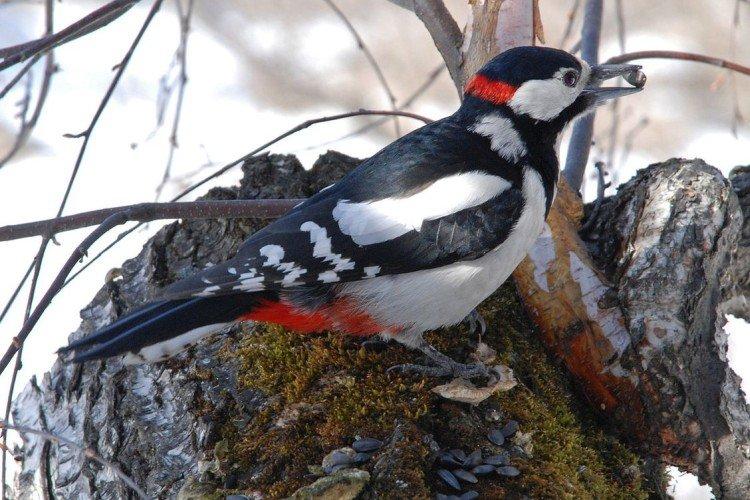
Keeping in captivity
Woodpeckers are very rarely kept in captivity. But not even because it is difficult for the bird, but because it becomes unbearable for the potential owner. During the day, the woodpecker knocks on the cage bars on the fly, and in addition to the constant noise, problems with a broken beak are added over time.

Breeding woodpeckers
Woodpeckers are lonely by nature, therefore they create pairs only during the mating season in early spring. Males attract females with their trills and tapping, after which they together build a nest disguised among the branches. But even such partners often hunt on different sides of their territory.
One clutch contains 3-7 eggs with an incubation period of 2 weeks. Helpless chicks gradually adapt to independent life in a month. It is interesting that little woodpeckers, which still cannot fly, still actively move along the branches. Sexual maturity occurs in a year.
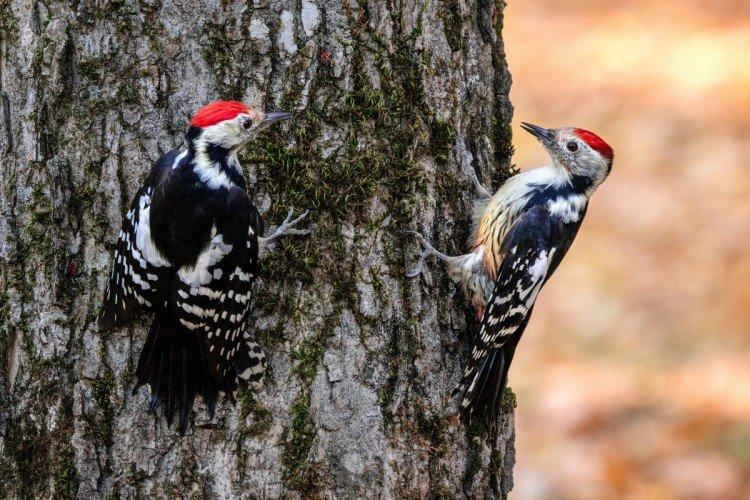
Natural enemies
The main enemies of woodpeckers are large birds of prey in the regions where they live. But they are almost not afraid of predators. Just because a fox or a bear will never get that high.
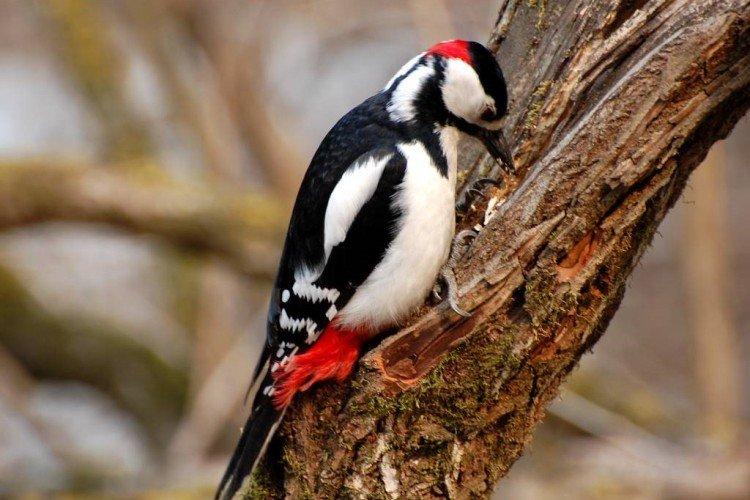
Woodpecker - bird photo
We are used to recognizing woodpeckers by the red "cap" on their heads. But in fact, they are much more varied. Take a look!
